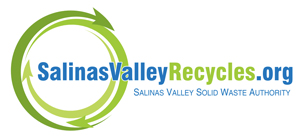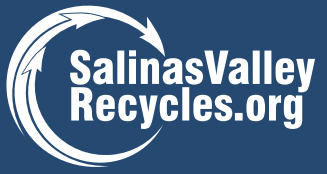Construction and demolition debris, also known as C&D, includes; asphalt, concrete (with or without rebar), lumber, drywall and other building materials. Waste generated during C&D activities can also include large quantities of material found in the general waste stream. For example, corrugated cardboard from packaging, a variety of plastics (PVC pipe, packaging, etc.), glass, yard wastes from site work and clearing, and even plastic bottles and aluminum cans are commonly produced on job sites.
Most C&D materials can be reused or recycled into new construction materials or other beneficial uses. For example, aggregate (produced by crushing concrete or asphalt) is widely recyclable. Recycled aggregate can be used for many purposes; the primary market is road base.
C&D materials are heavy, not easily compacted, and take up space in the landfill. That’s why it’s important to separate and recycle or divert these materials from the landfill. Keeping different types of building materials separated will result in significantly lower fees and charges and save some money on your next project.
Accepted C&D Materials
See Construction and Demolition Guide (above) for disposal locations.
Mixed C&D
Only the following materials mixed together constitute a mixed C&D load:
- Wood (2×4’s, plywood, pallets and wood framing, etc. – nails ok)
- Dry Wall (sheet rock, gypsum board, etc.)
- Cardboard (limited quantities)
- Roofing Materials (wood/asphalt shingles and tar paper)
Source-Separated Recyclables (no charge)
- Appliances (without Freon: water heaters, stoves, washing machines, dishwashers, etc.)
- Cardboard
- Electronics (televisions, computers, small appliances)
- Glass (bottles and jars) – no windowpane glass
- Metal (steel studs, aluminum window frames, ventilation ducting and flashing, etc.)
- Mixed Paper
- Rigid Plastics
Source-Separated C&D
- Appliances (with Freon: refrigerators, air conditioners, etc.)
- Asphalt
- Bricks
- Carpet and Carpet Padding – Only Accepted for Recycling at Madison Lane Recycling Center
- Concrete (with or without rebar)
- Green Waste or Yard Waste (grass clippings, leaves, branches, shrubs, etc.)
- Porcelain
- Roofing Tiles
- Soil (Clean Fill Dirt)
- Wood/Lumber – no painted or pressure treated
Landfill (disposal rates apply)
- Foam Polystyrene Packaging (aka Styrofoam™)
- Fiberglass
- Insulation
- Lunch Waste (fast-food wrappers/bags, napkins, to-go cups, straws, etc.)
- Mixed Loads of trash, dirt, soil, carpet, wood, concrete, rocks, metal, sheet rock, etc.
- Plastic Film (shrink wrap and bags)
- Plastic Strapping
- Plastic Tarps
- PVC Piping
- Stucco
- Particle Board/MDF (medium density fiberboard) *Particle Board cabinets/furniture should be donated if still in good condition.
- Treated wood* (railroad ties, telephone poles, pressure-treated lumber) *See Special handling requirements
For additional information and helpful videos visit CalRecycle C&D website.
C&D Ordinances
Several local Salinas Valley jurisdictions have adopted C&D ordinances as an effective method for diverting this material from the landfill. While ordinance requirements may vary slightly the main objective is to require contractors to deconstruct, reuse, salvage, recycle and/or divert C&D materials from construction projects and document those efforts.
City of Gonzales (Chapter 11.48)
Download Gonzales’s C&D brochure for more information on how to comply with the requirements
City of Soledad (Chapter 13.05)
Download Soledad’s C&D brochure for more information on how to comply with the requirements
City of Greenfield (Chapter 15.24)
Download Greenfield’s C&D brochure for more information on how to comply with the requirements
City of Salinas (Chapter 9-11.4)
For more information on how to comply with City requirements and to download Salinas C&D forms & brochure
King City (Chapter 12.04.090)
Download King City’s C&D brochure for more information on how to comply with City requirements
In addition, the California Green Building Standards or CalGreen Code requires the diversion of at least 65% of the construction waste generated during most “new construction” projects. Subsequent amendments have expanded upon what types of construction are covered; see the updated code.
Resources
GreenHalo Systems or Waste Tracking – provides on-line C&D diversion tracking systems for contractors.
US Green Building Council – a global movement of professionals, businesses, innovators and community leaders working to accomplish a single bold vision: healthy, efficient and equitable buildings and communities for all.
Build It Green – a member supported non-profit organization working to expand the market for green homes in California.
Carpet America Recovery Effort – provides on-line carpet yardage calculator and additional resources for carpet diversion efforts in California.
CalRecycle – on-line recycled-content construction products catalog.
Construction & Demolition Recycling Association – a National Trade Association dedicated to the C&D Recycling Industry.
Monterey County Habitat for Humanity ReStore – accepts donations of home goods and building materials. Location: 4230 Gigling Rd. Seaside, CA 93955 (831)272-4830 Open: Thursday – Saturday, 10:00 am – 4:00pm
Community Reuse Network – Connecting surplus items (furniture, home goods, etc.) from the hospitality industry with local, Monterey County non-profit groups in need.
Green Standard LTD – Provides office decommissioning including furniture donation, resale, and recycling services and reporting throughout North America.
Central Coast Builders Association (CCBA) – is the leading resource for construction professionals and consumers on the Central Coast by providing information, tools and resources that will improve our member’s success, develop consumer awareness and promote our industry.

